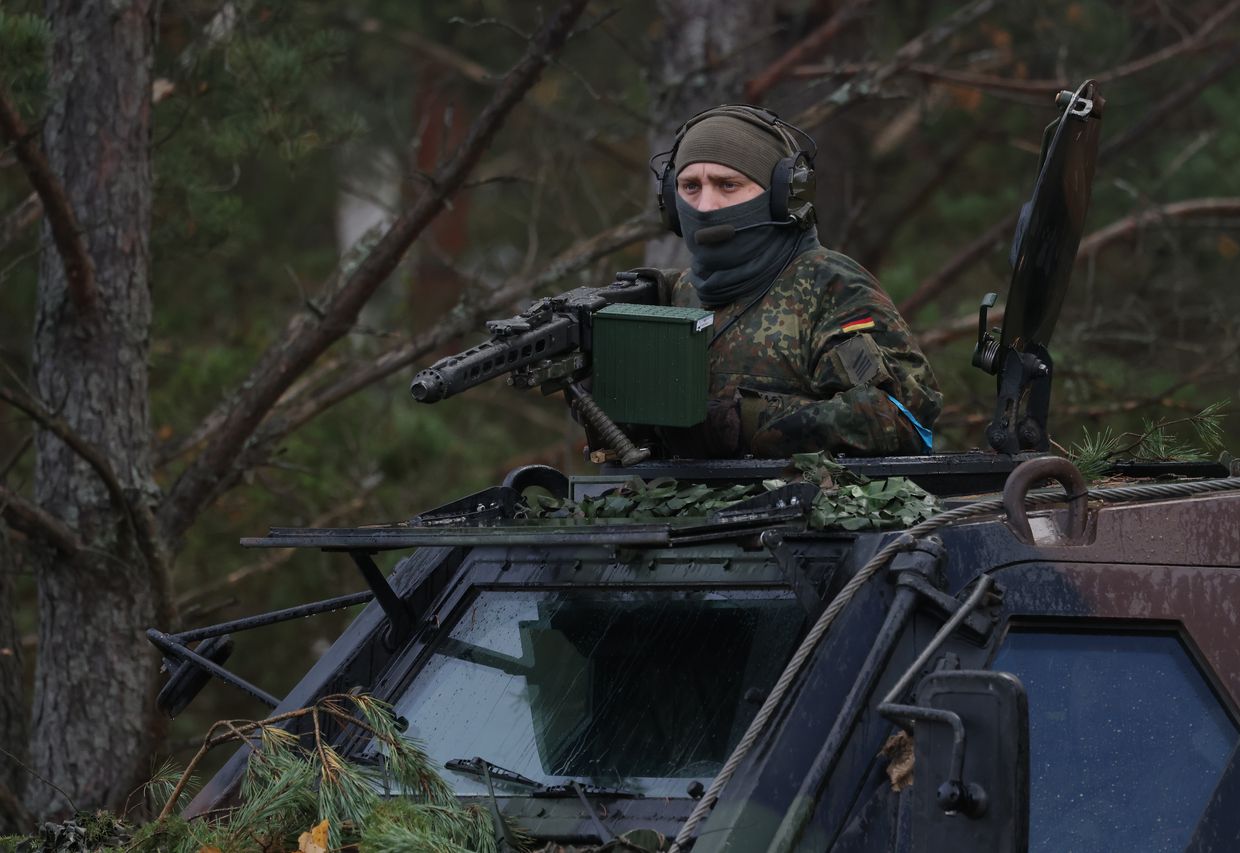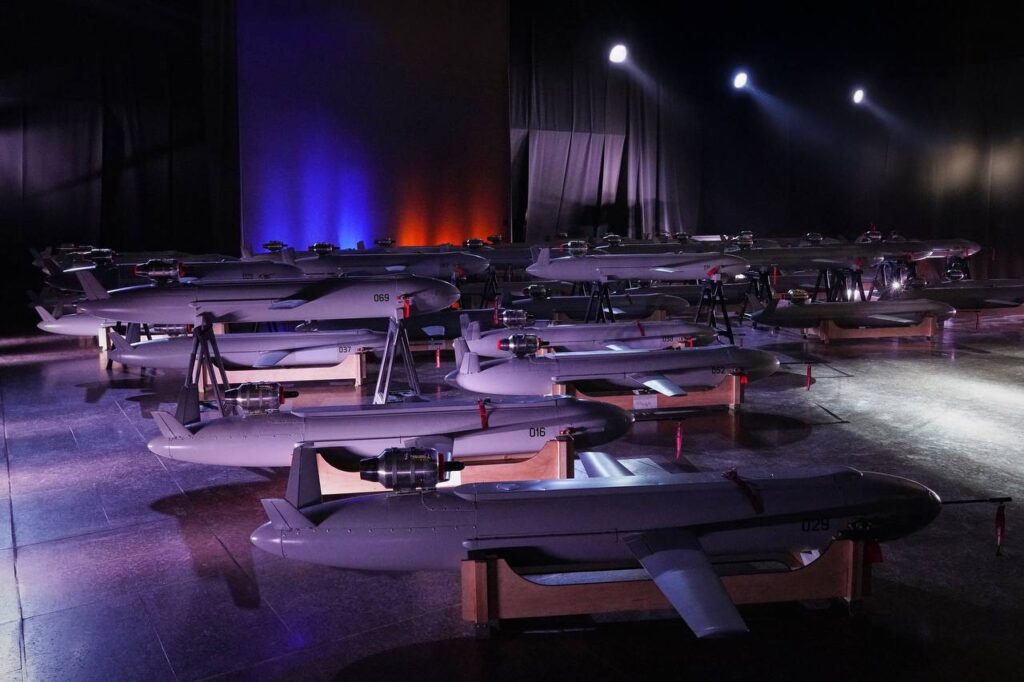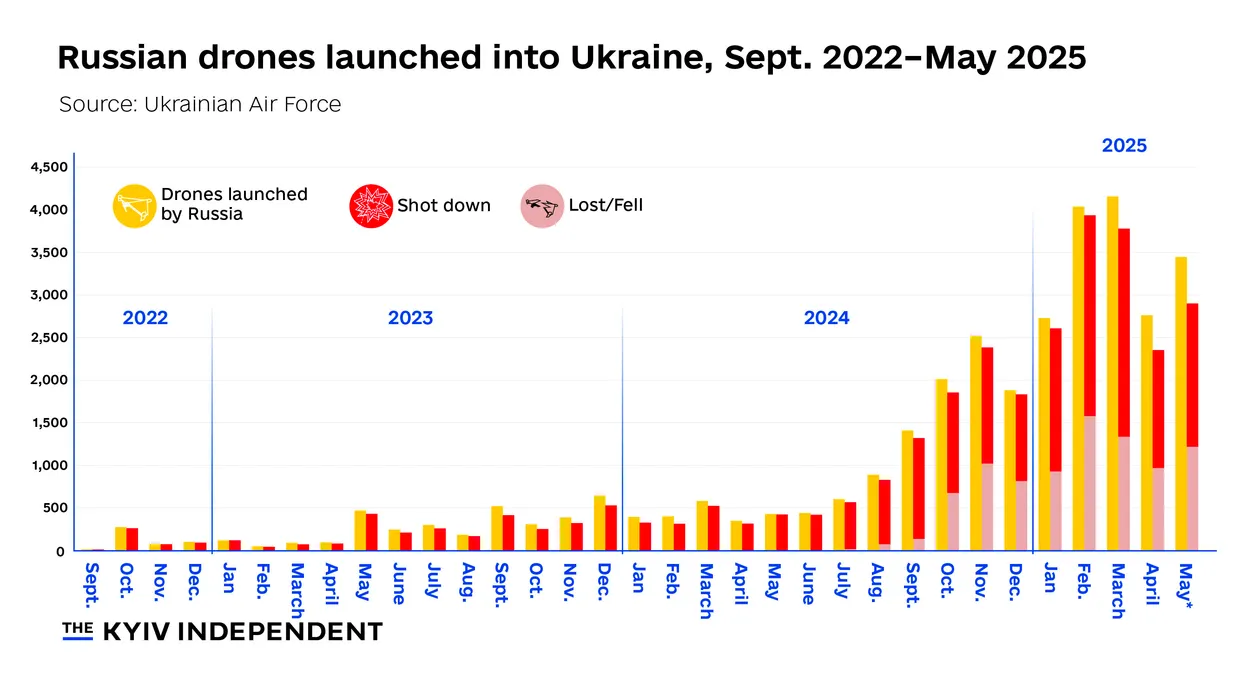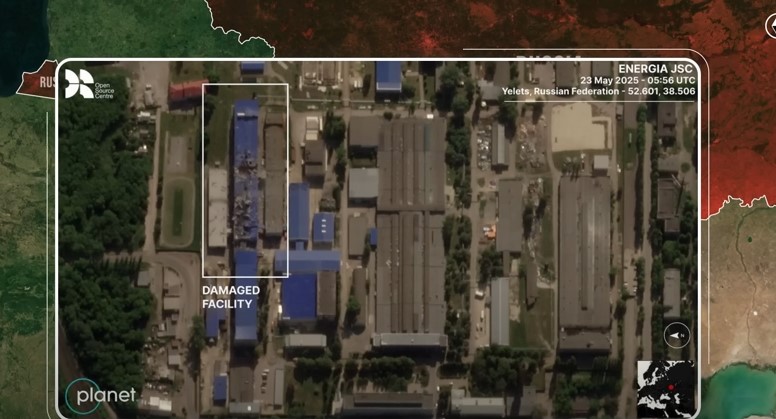Vue lecture
120 secondes de Tech / 17 juin 2025
120 secondes de Tech / 16 juin 2025
VivaTech 2025 : "On utilise l’intelligence artificielle pour redonner goût à la lecture"

120 secondes de Tech / 13 juin 2025
NATO expands satellite surveillance to monitor Ukraine, eastern flank

NATO is rolling out a new satellite surveillance system designed to monitor military activity in Ukraine and along the alliance's eastern borders, senior commander Admiral Pierre Vandier told Bloomberg in comments published on June 12.
The initiative, named Smart Indication and Warning Broad Area Detection (SINBAD), will allow NATO to scan vast territories with unprecedented frequency, using AI-powered analysis to detect changes and alert allies to potential threats. The alliance has reportedly selected U.S. satellite imaging firm Planet Labs as the project's key partner.
"Today, we're not certain the Russians will stop at Ukraine," Vandier said. "We'll be able to tell them: we're watching," he added.
Vandier, who oversees the alliance's battlefield innovations, emphasized that the ability to monitor troop movements and detect ceasefire violations has become a central concern for European allies, particularly as discussions continue around future peace frameworks for Ukraine.
Previously, French President Emmanuel Macron and British Prime Minister Keir Starmer initiated a so-called "coalition of the willing," uniting countries that would back a potential peace agreement between Ukraine and Russia.
So far, at least 37 countries have been involved in the coalition's discussions, with 15 reportedly ready to contribute their troops. Other members have been asked to provide other forms of support, including intelligence, arms, or naval support.
The launch of SINBAD comes as NATO seeks to boost its own capabilities in space surveillance, a field where the alliance has long relied heavily on U.S. assets. While the U.S. remains central to NATO's space strategy, European allies are moving to reduce dependency, especially amid shifting U.S. foreign policy under President Donald Trump.
Trump has repeatedly cast doubt on the U.S. commitment to NATO, signaled intentions to reduce U.S. troop presence in Europe, and blamed Ukraine's pursuit of alliance membership for provoking the war.
The alliance is also expected to endorse a new defense spending benchmark, 5% of economic output, with 3.5% for core defense and 1.5% for related sectors, at its upcoming summit in The Hague on June 24–25.
President Volodymyr Zelensky confirmed that Ukraine has been invited to attend the NATO leaders' summit. "We were invited to the NATO summit. I think this is important," Zelensky said during a June 2 press conference.
Zelensky noted ongoing discussions with NATO Secretary General Mark Rutte and other alliance officials on Ukraine's potential role and outcomes at the summit.
 The Kyiv IndependentMartin Fornusek
The Kyiv IndependentMartin Fornusek
120 secondes de Tech / 12 juin 2025
Alexandr Wang, la nouvelle star de l’IA qui présente (trop) bien

Salon VivaTech : Nvidia en tête d'affiche et Macron en défense de la "souveraineté technologique"

120 secondes de Tech / 11 juin 2025
Guerre commerciale : à Londres, la Chine et les États-Unis s'entendent sur un "cadre général"

120 secondes de Tech / 10 juin 2025
Ukraine already redefined modern warfare with Operation Spiderweb — now it’s planning next revolution with new weapons

Ukraine is quietly building a new class of weapons — drone-powered cruise missiles that are small, cheap, and deadly. Ukrainian arms expert Bohdan Dolintse told ArmyInform that these new systems blend drone and missile technologies into a hybrid “drone-missile” category.
These weapons use mini jet engines, aviation-model components, and advanced guidance systems, yet weigh a fraction of traditional cruise missiles and cost exponentially less.
The development comes in the wake of Operation Web, widely seen as a watershed in modern warfare, where Ukraine used synchronized drone swarms to destroy high-value Russian assets, reshaping global perceptions of non-nuclear deterrence.
On 1 June, Ukraine’s Security Service carried out a special operation that struck 41 aircraft, part of Russia’s nuclear triad. The mission has become a symbol of a new era of asymmetric warfare, where innovative drone systems and high-tech solutions allow a non-nuclear nation to effectively challenge a nuclear power state.
Now, Kyiv is scaling up. If serial production is launched, Dolintse says, Ukraine could manufacture hundreds of these precision-guided munitions monthly.
Though still in development or limited deployment, their battlefield potential is vast — from striking air defense and radar sites to disabling critical logistics nodes deep behind enemy lines.
“This is a scalpel — a precise, mobile solution to hit vulnerable yet decisive targets,” Dolintse emphasizes.
Highly modular, these missiles can be launched from aircraft, drones, or ground platforms. Instead of a single $10 million missile, Ukraine envisions waves of compact, lethal munitions that can shift the balance of power in the skies — and the future of warfare itself.
120 secondes de Tech / 9 juin 2025
120 secondes de Tech / 6 juin 2025
Ukraine’s cheap drones did not just hit Russia—they prompt US to rethink homeland security

Ukrainian drones not only destroyed dozens of Russian aircraft—they also shattered the Pentagon’s perception of security for the US itself.
On 1 June, Ukraine’s Security Service carried out a special operation that struck 41 aircraft, part of Russia’s nuclear triad. The mission has become a symbol of a new era of asymmetric warfare, where innovative drone systems and high-tech solutions allow a non-nuclear nation to effectively challenge a nuclear power state.
US Army Secretary Daniel Driscoll warns that Ukraine’s recent deep strikes inside Russia reveal the US’s own vulnerabilities to similar attacks, The Hill reports.
Driscoll says the operation, reportedly involving over 100 low-cost drones smuggled into Russia by truck, illustrates how cheap, easily available weapons can inflict massive damage in capable hands. He expresses concern that the US Army is lagging behind in countering such threats.
“At a cost of mere tens of thousands of dollars, Ukraine inflicted billions in damage, potentially setting back Russia’s bomber capabilities for years,” Driscoll explains.
He adds that drones are just one example of a broader shift, and frankly, the US Army is not keeping up.
Driscoll’s concerns are echoed by a senior member of the committee, Rep. Adam Smith (D-Wash.), who says Ukraine’s operation has “gotten our attention of the vulnerabilities of existing systems and the capabilities of drones” and other new systems.
“There is no question that the nature of warfare is changing dramatically. How do we adjust our force to meet those challenges?” he continues.
Ukraine’s successful strike has raised new questions about how well US territory is truly protected, a concern that hasn’t faded since mysterious drone sightings over New Jersey and other northeastern states late last year.
Last month, US President Donald Trump announced plans to create his own missile defense system called the Golden Dome, as one way to address new threats.
But this system, designed as a network of space-based radars and interceptors, is meant to defend against ballistic and intercontinental missiles, not low-flying drones or missiles launched from ships.
To respond quickly to emerging threats, Driscoll calls for more agile forces capable of rapid innovation and closer cooperation with the private sector, stating that the Army is currently frozen in bureaucracy.
120 secondes de Tech / 5 juin 2025
Trump administration redirecting anti-drone tech from Ukraine to US forces in Middle East, WSJ reports

U.S. President Donald Trump's administration is redirecting anti-drone technology earmarked for Ukraine to its own troops based in the Middle East, the Wall Street Journal (WSJ) reported on June 4.
According to the WSJ, special fuzes used in ground-to-air rocket systems that protect against drone attacks will be redirected towards units in the Middle East, as the U.S. braces for conflict with Iran as well as Houthi militants in Yemen.
The Pentagon notified Congress last week in a previously undisclosed message that the redirection of the fuzes, used in Advanced Precision Kill Weapon System, was identified by Defense Secretary Pete Hegseth as an "urgent issue."
The fuzes were initially bought for Ukraine by the Biden administration.
The decision comes as Russia has intensified its drone attacks in recent months, targeting cities across Ukraine. On the night of June 1, Russia launched its largest swarm of attack drones since the start of the full-scale invasion, topping out at 472 total units at once.
President Volodymyr Zelensky said on June 4 that Russia has launched over 20,000 drones towards Ukraine since the start of 2025.
A source in Ukraine's military intelligence (HUR) told the Kyiv Independent on June 4 that Russia will soon be able to deploy more than 500 long-range drones a night to attack Ukraine as it ramps up production and builds new launch sites for them.

Since the start of his presidency, Trump has been critical of providing Ukraine with additional military aid. The U.S. temporarily halted military supplies for Ukraine in March before restarting them after Kyiv agreed to the truce plan during talks in Jeddah on March 11.
Hegseth, who reportedly ordered a temporary halt of military aid flights to Ukraine, has also been critical of providing additional aid to Kyiv. Earlier in the day on June 4, Hegseth did not attend a meeting of the Ukraine Defense Contact Group, marking the first instance since the start of the full-scale war that the U.S. Defense Secretary was not in attendance.
Since Trump's second term began in January, no new aid packages have been approved.
Following a call on June 4 with Russian President Vladimir Putin, Trump said that Putin "will have to respond" to Ukraine's recent drone attack on military airfields.
Ukraine has called upon its partners to invest more in its arms production and to provide additional air defenses, namely Patriot systems, to help fend off intensifying Russian aerial attacks.
 The Kyiv IndependentSonya Bandouil
The Kyiv IndependentSonya Bandouil
120 secondes de Tech / 4 juin 2025
120 secondes de Tech / 3 juin 2025
120 secondes de Tech / 2 juin 2025
The Telegraph: Ukrainian drones prove most tanks are garbage – but not all are dead yet

Thousands of tanks have been destroyed by drones in Ukraine, but British military expert Hamish de Bretton-Gordon argues the tank is not obsolete—just outdated.
Writing in The Telegraph, the former commander of the UK’s Joint CBRN Regiment and NATO’s Rapid Reaction CBRN Battalion argues that next-gen tanks equipped with electronic jammers and Active Defence Systems (ADS) can survive and dominate on today’s drone-filled battlefield.
“A properly equipped modern tank… will survive and win,” he writes, pointing to Israel’s Merkava tanks, which remain effective even under drone threat.
The tanks being destroyed in Ukraine, he notes, are mostly outdated Soviet models. Western forces must not assume the same fate for modern, tech-integrated armour.
War for the airwaves
Victory today often comes down to electronic dominance. Controlling the electromagnetic spectrum—jamming enemy signals while maintaining your own—can decide who controls the skies.
“He who controls this, controls the battle space and will win the war.”
Ukraine has shown how to fight in this space, using tools like Starlink and high-flying relay drones to outmaneuver Russian jamming. Some drones even use fibre-optic cables—an old but effective way to stay connected when signals fail.
“Old-fashioned methods are overcoming the latest and most brilliant electronic-warfare systems,” de Bretton-Gordon notes.
UK forces lag behind
Britain, he warns, is “almost totally unequipped” for this kind of warfare. With the Strategic Defence Review (SDR) due next week, de Bretton-Gordon says urgent action is needed.
“We need to be able to operate on a drone battlefield without being cut to pieces.”
He attributes the SDR’s delay to the sheer pace of change, not indecision—highlighting how quickly military tech becomes outdated.

Leadership still wins wars
Technology aside, strong field leadership remains essential. De Bretton-Gordon calls for renewed focus on Mission Command, the British Army’s tradition of empowering junior officers to act quickly without waiting for top-down orders.
“A commander who waits to hear back… when an opportunity appears… is not a real officer at all.”
The future is hybrid: steel and signal
For all the talk of drones and AI, war still comes down to fundamentals—adaptability, decision-making, and force protection.
“The principles of war have not changed… some of the new generation will dominate the electronic battlespace.”
And yes—they may still ride to war in tanks.
120 secondes de Tech / 30 mai 2025
Frontline report: Putin’s helicopter dodges friendly fire as Ukrainian drone swarm engulfs Moscow

Today, there are a lot of interesting updates from the Russian Federation. Here, in the aftermath of Russia’s largest missile strike of the war, Ukraine launched a thunderous response that sent shockwaves through the Russian homeland.
As drones swarmed strategic targets and panic gripped the skies over Moscow, even Vladimir Putin found himself uncomfortably close to the line of fire.
Drone swarm sends Russian officials fleeing
Even while the 1,000 for 1,000 prisoner-of-war exchange process was taking place as agreed upon in Istanbul, the Russians launched a massive drone and missile strike campaign targeting Ukrainian civilians and critical infrastructure.
The Russian strike consisted of almost 300 drones and 69 guided missiles, making it the largest strike launched in a single day, with the campaign lasting over 3 days, using nearly 1,000 drones in total.

The Ukrainians responded with a massive drone strike of their own, targeting critical Russian military and economic infrastructure used for the launch of drones and missiles, as well as their production.
The intensity of the Ukrainian strike caused chaos to the point that a dozen Russian government planes, presumably with Russian government officials, flew from Moscow towards the eastern cities of Samara and Kazan, likely to evade being killed in precision strikes.

Putin’s close call in the sky
At the time of the strike, Russian President Putin was in a helicopter, likely to avoid becoming a victim of the massive Ukrainian strikes on the ground.
However, the commander of Russian air defense forces, Yuri Dashkin, confirmed that Putin was almost killed, as his helicopter ended up in the middle of the Russian effort to repulse Ukrainian drones.
Such close calls and sheer incompetence are a common occurrence, as they previously targeted and shot down not just their own fighter jets, but several civilian airliners in the past as well.

Moscow descends into panic
Another video from Moscow shows a Russian civilian jet being caught amidst the ground fire of Russian air defenses, narrowly avoiding being hit after being mistaken for a very large Ukrainian drone.
Such chaos, as well as Ukrainian strikes targeting military airfields in the area, forced the Russian government to close all airports in the Moscow area and other major cities in Russia during the day.
For the past week, the Ukrainians launched intense strikes that forced the Russian airports to keep all their civilian flights grounded.

If Ukrainians consistently force Russian civilian aviation to stay grounded, it will prevent the travel of the civilian population, on top of denying the flow and export of goods across the country.
This is why the Ukrainians were intensively conducting drone strikes to force the grounding of civilian aviation at major airports in the Moscow and Kaluga regions.
Strikes hit Russia’s military-industrial nerve
The Ukrainian drone strikes properly struck key economic and military infrastructure, including a battery factory in the city of Yelets, as confirmed by satellite footage.
The batteries produced at this plant are used for an application in the Russian military industry, including guided missiles, which could indirectly delay future Russian strikes. Furthermore, two chemical plants in the cities of Kineshma and Tula were struck by Ukrainian drones, with footage confirming the direct impact on the plants.

These chemical plants are directly tied to the Russian military industry, as they produce Nitric acid, ammonium nitrate, TNT, and RDX, which are used to produce missiles, artillery shells, and landmines. Strikes against these plants significantly disrupt Russian production of weapon systems and ammunition.
These strikes are no coincidence, as causing any disruption alleviates the pressure off of frontline Ukrainian infantrymen, as Russia prepares to go all in on the attack this summer.

On top of that, the Ukrainians struck the Skaut tractor factory in Tula, after Ukrainian Military Intelligence discovered that the factory was covertly being used to produce parts for artillery systems and logistics trucks for the Russian army.

Strategic pressure ahead of summer offensive
Overall, the largest Russian missile strike against Ukraine did not pass without an even more devastating Ukrainian retribution, which resulted in successful strikes against critical Russian military industries and the cancellation of air traffic.
Continuation of these strikes by the Ukrainians could lead to devastating blows to the Russian wartime industry, which could consequently weaken the Russian capability to conduct intense assaults during their planned summer offensive.
In our daily frontline report, we pair up with the military blogger Reporting from Ukraine to keep you informed about what is happening on the battlefield in the Russo-Ukrainian war.
You could close this page. Or you could join our community and help us produce more materials like this.
We keep our reporting open and accessible to everyone because we believe in the power of free information. This is why our small, cost-effective team depends on the support of readers like you to bring deliver timely news, quality analysis, and on-the-ground reports about Russia's war against Ukraine and Ukraine's struggle to build a democratic society.
A little bit goes a long way: for as little as the cost of one cup of coffee a month, you can help build bridges between Ukraine and the rest of the world, plus become a co-creator and vote for topics we should cover next. Become a patron or see other ways to support.
120 secondes de Tech / 29 mai 2025
120 secondes de Tech / 28 mai 2025
120 secondes de Tech / 27 mai 2025
120 secondes de Tech / 26 mai 2025
Ukraine needs strategic command for defense innovation to challenge Thales and Rheinmetall, says EW systems producer

Wars are no longer won by strength alone, but by defense tech innovations. That’s the message from Anatolii Khrapchynskyi, military expert and deputy director general of an electronic warfare systems company, ArmyInform reports.
Earlier, Valerii Zaluzhnyi, former commander-in-chief of the Ukrainian Armed Forces, said that hoping for 1991 borders is impossible without a tech breakthrough. He believes that his country can only talk about a high-tech war of survival, “one that uses minimal human resources and minimal economic means to achieve maximum effect.” Given the demographics and economy, Ukraine is incapable of fighting any other kind of war.
Following the Second Ukraine–EU Defense Industry Forum, Khrapchynskyi called for the creation of a national Engineering Headquarters, a strategic center to fuel breakthrough innovations in Ukraine’s fight against Russia.
“Only then can we stand not just next to Thales or Rheinmetall, but speak with them as equals,” the expert emphasized.
The forum, hosted by the EU in Brussels, brought together top defense officials and industry leaders from both sides. Among the key participants were EU Commissioner for Defence and Space Andrius Kubilius, Ukraine’s Minister for Strategic Industries Herman Smetanin, EU High Representative Kaja Kallas, and Ukrainian presidential advisor Oleksandr Kamyshin.
“The goal of the forum was to shift from receiving ‘aid’ to engaging in ‘co-production’, from dependency to cooperation,” Khrapchynskyi said.
A major outcome was the signing of a Memorandum of Understanding between the Ukrainian government and the Aerospace, Security and Defence Industries Association of Europe (ASD). A Ukraine–EU Defense Industrial Cooperation Task Force was also launched.
The European Union has become the largest state investor in Ukraine’s defense sector, directing €1.4 billion in proceeds from frozen Russian assets toward Ukrainian-made weaponry, including drones, artillery, and electronic warfare tools.
Khrapchynskyi stressed that Ukraine is not merely a proving testing ground for Western technology — it is becoming their creator.
Ukraine has built the world’s largest aircraft, the Mriia, crippled Russia’s Black Sea Fleet with Magura naval drones, is now carving out its own niches: reconnaissance systems, EW, drones, and adaptive weaponry.
“We’re no longer catching up. We’re setting the tone — the tone of voice — for the new defense reality,” Khrapchynskyi explained.
He warned that despite sleek presentations from Western firms, war demands simple, fast, and effective solutions, qualities that Ukrainian innovations already possess. The key now is to protect these technologies from being shadowed by large foreign defense corporations.
That is why Khrapchynskyi is advocating the idea of an “Engineering Headquarters”: a centralized command for defense innovation where front-line needs are rapidly translated into mass-produced solutions that are standardized, unified, and synchronized with Europe’s defense ecosystem.
120 secondes de Tech / 23 mai 2025
120 secondes de Tech / 22 mai 2025
120 secondes de Tech / 22 mai 2025
120 secondes de Tech / 21 mai 2025
120 secondes de Tech / 20 mai 2025
120 secondes de Tech / 19 mai 2025
120 secondes de Tech / 16 mai 2025
Welcome to the Technate
— Permalien